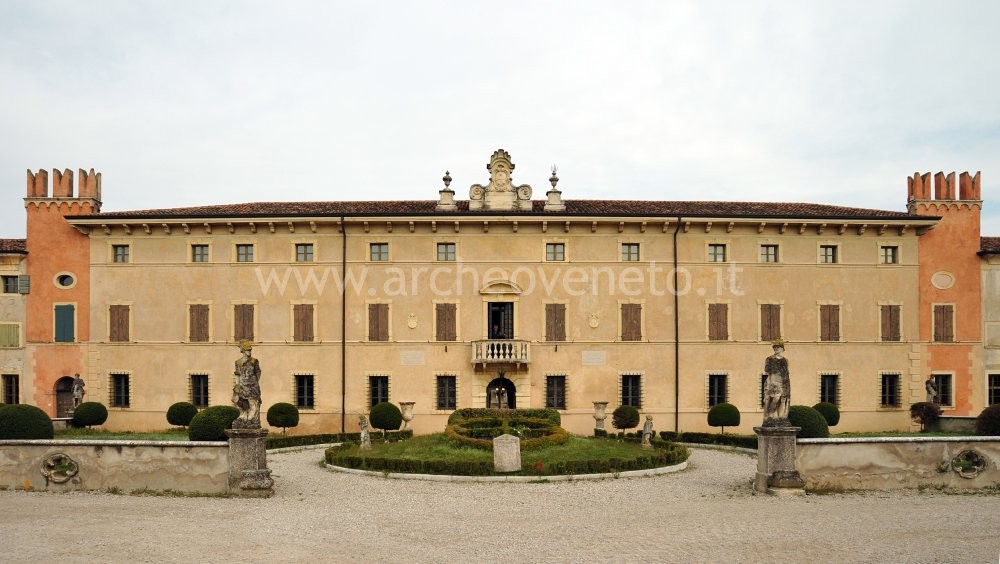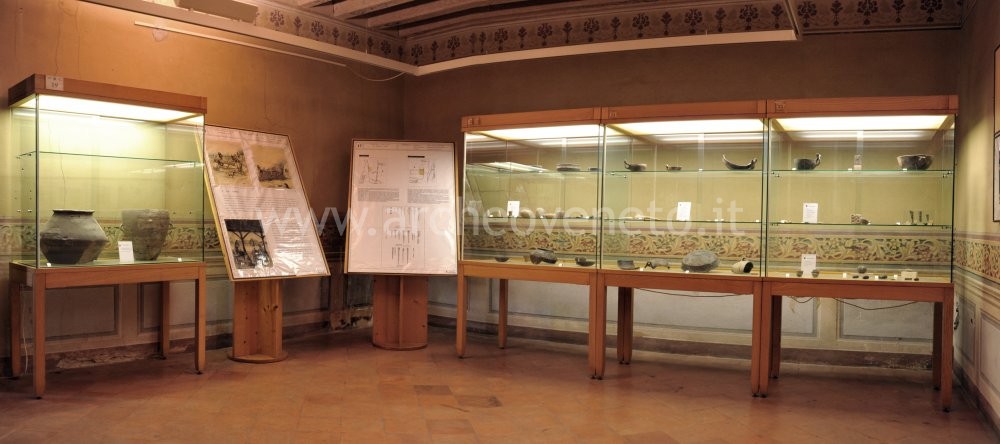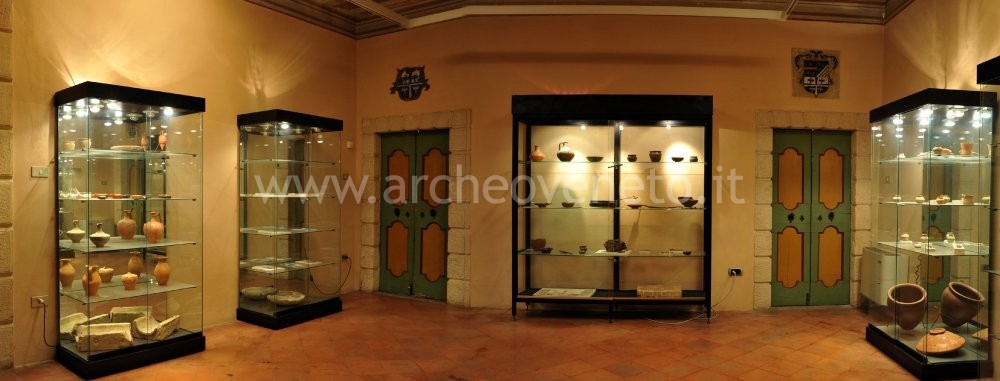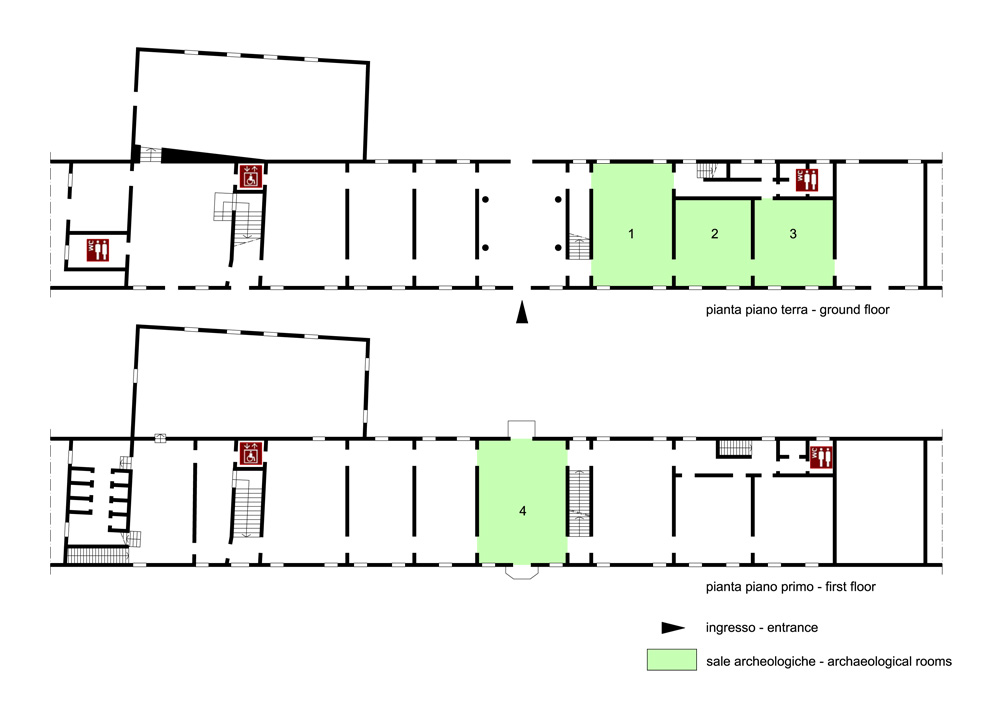|
|
File
Archaeological Museum – Povegliano Veronese
|
| Via Balladoro 15 (Villa Balladoro) – 37064 Povegliano Veronese (VR)
|
  |
|
Summary

The Archaeological District Museum of Povegliano Veronese is situated in the rural courtyard of the eighteenth-century villa Balladoro. This museum collects the archaeological finds of the Bronze, Iron and Roman Age found in the area of Povegliano and in the surrounding towns. There is also a display of Celtic materials and a Lombard grave. A section dedicated to the Celtic necropolis recently found nearby Ortaia will be shortly arranged.
Collection history
The first archaeological excavations in Povegliano were carried out between 1876 and 1877 in the town of Gambaloni. The finds discovered during the excavation activities are presently contained in the National Museum Pigorini of Rome. The research activities in the region went on all along the twentieth century until, between 1985 and 1986, four Celtic graves were brought back to light in the town of Madonna dell’Uva Secca as well as about forty burials in the town of Ortaia. These finds led to the opening of the Museum of Povegliano which, thanks to the constant commitment of the members of the Associazione Balladoro, took place in 1986.
|

 The first room gathers the material of the Bronze Age discovered in several locations nearby Povegliano. Inside the first display case, there are two two-edged bronze axes, one of which is twisted and both come from Gambarella (Late Bronze Age). The second display case collects three earthen cups with a strap handle provided with ashlars, a bone arrowhead, bone washers, a spindle whorl, a fragment of a worked horn, earthen bowls and loom weights. The third display case contains different materials from the Late Bronze Age from Nogarole Rocca: a Campignan tranchet, a flint core, a loom weight, different types of cups (handled and hemispheric), deer antler fragments and elements of worked flint. The first room gathers the material of the Bronze Age discovered in several locations nearby Povegliano. Inside the first display case, there are two two-edged bronze axes, one of which is twisted and both come from Gambarella (Late Bronze Age). The second display case collects three earthen cups with a strap handle provided with ashlars, a bone arrowhead, bone washers, a spindle whorl, a fragment of a worked horn, earthen bowls and loom weights. The third display case contains different materials from the Late Bronze Age from Nogarole Rocca: a Campignan tranchet, a flint core, a loom weight, different types of cups (handled and hemispheric), deer antler fragments and elements of worked flint.
An enigmatic object comes from Ortigara di Grezzano, about 10 cm long, made from sandstone, kept inside the fourth display case having a flat shape with cross and longitudinal engravings on both sides. Still inside the fourth display case there are a small flint dagger having a triangular base from Boschetto di Grezzano and an anthropomorphic earthen statuette from Erbè. Next to these objects, there is a display of other tools of uncertain origin: flint and worked stone elements, spindle whorls and different kinds of pottery.
The tools found in the town of Grezzanin-Livello are kept in the fifth display case; among them we find earthen pottery, an end scraper, flint arrowheads (a replication of which is displayed), an earthen bellows, spindle whorls and fragments of decorated bowls.
The museum goes on with the exhibition of several blades coming from Bagnolo-Corte Vivaro and Ortigara di Grezzano; a fragment of a sword, five fragments of a dagger, the cutting blade of an axe, an awl, two flanged axes and a bronze chisel.
Different shapes of small daggers come instead from the second site (often decorated with rivets), together with a triangular-handle razor, a pin with globular head, one with a three-ring head, moulding casts in sandstone and a flanged bronze axe.
|

 The second room is dedicated to the finds discovered during the excavation campaigns and the field walking activities carried out in Muraiola around the mid-1980’s. The surveys carried out over the years highlighted the existence of an ancient settlement of the Middle Bronze Age, having probably a relationship with the graveyard found in Gambaloni. Beautiful bronze items come from this necropolis, presently kept in the National Museum Pigorini of Rome; among them, noteworthy are different daggers, bronze swords and needles and amber rings. The second room is dedicated to the finds discovered during the excavation campaigns and the field walking activities carried out in Muraiola around the mid-1980’s. The surveys carried out over the years highlighted the existence of an ancient settlement of the Middle Bronze Age, having probably a relationship with the graveyard found in Gambaloni. Beautiful bronze items come from this necropolis, presently kept in the National Museum Pigorini of Rome; among them, noteworthy are different daggers, bronze swords and needles and amber rings.
Inside the first display case, there are two large fictile vessels used for food, found in the site Muraiola: a biconical vase with handles caniculate at the point of highest expansion and a jar with vertical strap handles.
The second display case contains a cup with a horned handle, a concave-wall cup, a glass, decorated fictile weights, truncated conical nozzles, spindle whorls, reels, a biconical decorated oil jar, two bowls and two small cups.
The third display case shows different samples of pottery (three horned-handled cups, a drainer and a large bowl with grooved decorations) and bone-horn tools (bone arrowheads, an antler, a bone wheel) coming from the settlement of Muraiola.
The exhibition concerning the settlement of Muraiola ends with a horned-handled cup, two earthen moulds (one may belong to a triangular pendant having two rows of three small globes at its base and the other one might belong to a series of rings connected to one another), a large bowl, flint tools, the blade of a dagger, the head of a spear, a razor with a broken blade, miniatures pots and a coprolite.
|

 The third room is destined to host items belonging to the Iron and Roman Age discovered in different locations of the area of Povegliano, such as Ortaia, Isolalta, Crocetta and Madonna dell’Uva Secca. The third room is destined to host items belonging to the Iron and Roman Age discovered in different locations of the area of Povegliano, such as Ortaia, Isolalta, Crocetta and Madonna dell’Uva Secca.
The first display case contains Roman material of uncertain origin donated by the baron Francesco Malfatti in the late 1980’s; among this material, noteworthy are the lamps, olpes, small amphorae and glass unguentaria.
In the second display case, there are Celtic items found in the low plain of Verona. Several ceramic items come from Ortaia (olpes, oil jars and glasses); grave goods come from Crocetta made up of a bronze pan, a black painted patera and several fragments of an iron sword with its bronze sheath. The site which provided with the highest number of finds of this period is certainly Madonna dell’Uva Secca, of which grave goods are displayed in the second case including an oil jar, a hollow edge bowl, miniature potteries, a dagger, a pan melted by the funerary fire and three Celtic coins. Other samples of grave goods coming from the site of Madonna dell’Uva are displayed inside the fourth display case; among these, noteworthy are the goods of the grave 3 made up of an ovoid oil jar urn with notches under the edge, a covering bowl, an iron knife, a spindle whorl, two small pots and fragments of a bronze foil deformed by the fire.
|

 The last room contains a Lombard ritual burial discovered in the town of Ortaia with a headless horse and two greyhounds. The last room contains a Lombard ritual burial discovered in the town of Ortaia with a headless horse and two greyhounds.
|

Admission: Negli orari di apertura
Ticket: No
 School access School access
 Disabled access Disabled access
Opening Days
| Tipology |
When |
Specs |
| Summer/Winter |
Monday |
Upon reservation |
| Summer/Winter |
Tuesday |
Upon reservation |
| Summer/Winter |
Wednesday |
Upon reservation |
| Summer/Winter |
Thursday |
Upon reservation |
| Summer/Winter |
Friday |
Upon reservation |
| Summer/Winter |
Saturday |
Upon reservation |
| Summer/Winter |
Sunday |
First sunday of the month: 10.00 – 12.30 e 14.30 – 18.00 |
Recommended tour time (minutes): 30
 Guide a stampa Guide a stampa
Catalogo
Italian
 Information boards Information boards
Italian
 Captions under exhibits Captions under exhibits
Italian
 Guided Tours Guided Tours
 Other activities Other activities
| Povegliano: la sua storia dal bronzo al ferro. 3 anni di ricerca dell’Associazione Balladoro 1986, a cura di Salzani L. e Associazione Balladoro, Povegliano Veronese. |
| Povegliano: l’abitato dell’Età del Bronzo della Muraiola 1997, a cura di Belemmi L., Salzani L., Squaranti G. , Villafranca di Verona. |
| Bonetto J. 2009, Veneto (Archeologia delle Regioni d’Italia), Roma, pp. 365. |
|

